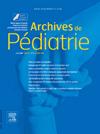严重急性支气管炎患儿的特征和预后因素:10年的经验。
IF 1.3
4区 医学
Q3 PEDIATRICS
引用次数: 0
摘要
背景:严重急性支气管炎(SAB)可危及婴儿的生命,并可能导致流行病期间重症监护病房(ICU)的拥挤。我们的目的是研究需要转入重症监护室的 SAB 患者的临床和辅助临床特征,以检查他们的预后,并确定住院时间超过 7 天和/或死亡的预测因素:这是一项横断面回顾性研究,研究对象包括2010年1月1日至2019年12月31日期间因首次发作SAB而转入重症监护室的年龄≤12个月的婴儿:我们收集了380名患者的数据,中位年龄为1.75个月。他们有早产史(20.53%)、低出生体重(18.68%)、父母有过敏史(12.89%)和合并症(7.37%,主要是先天性心脏病[5%])。转院的主要原因是低氧血症和氧需求增加(49.73%)。63.42%的患者需要机械通气(MV),67.63%的患者需要无创通气(NIV)。多年来,无创通气已取代了机械通气。其使用率从 2010 年的 40.4% 增加到 2019 年的 96%,而 MV 和 NIV 的使用率分别为 83.84% 和 42%。共有 14 名患者(3.68%)死亡。住院时间≥7天和/或死亡的独立预测因素是年龄小于2个月(p = 0.002)、发育不良(p = 0.006)、呼吸暂停(p = 0.045)、脱水(p = 0.018)、出现生物炎症反应(p = 0.002)、分离出呼吸道合胞病毒(p < 0.001)和细菌合并感染(p = 0.013)。严重程度评分范围为 0 至 17 分,最佳临界值为 5 分:结论:对于具有这些严重程度预测因素的患者,需要特别谨慎。在普通儿科普及 NIV 可以改善 SAB 的管理,减少转入重症监护室的情况。本文章由计算机程序翻译,如有差异,请以英文原文为准。
Characteristics and predictors of outcome in children with severe acute bronchiolitis: A 10-yearexperience
Background
Severe acute bronchiolitis (SAB) can be life-threatening for infants and may be responsible for the congestion of intensive care units (ICU) during epidemics. We aimed to study the clinical and paraclinical characteristics of patients with SAB requiring a transfer to the ICU in order to examine their outcomes and to identify the predictors of a stay of ≥7 days and/or death.
Methods
This was a cross-sectional retrospective study including infants aged ≤12 months transferred to the ICU for their first episode of SAB between 1 January 2010 and 31 December 2019.
Results
We collected data on 380 patients with a median age of 1.75 months. They had a history of prematurity (20.53 %), low birth weight (18.68 %), parental atopy (12.89 %), and comorbidity (7.37 %, mainly congenital heart disease [5 %]). The leading cause of transfer was hypoxemia and increased oxygen requirements (49.73 %). The patients required mechanical ventilation (MV) in 63.42 % of the cases and noninvasive ventilation (NIV) in 67.63 %. NIV has supplanted MV over the years. Its use has increased from 40.4 % in 2010 to 96 % in 2019 compared with 83.84 % and 42 % for MV. A total of 14 (3.68 %) patients died. The independent predictors of a stay of ≥7 days and/or death were young age ≤2 months (p = 0.002), failure to thrive (p = 0.006), apnea (p = 0.045), dehydration (p = 0.018), the presence of biological inflammatory reaction (p = 0.002), isolation of respiratory syncytial virus (p < 0.001), and bacterial coinfection (p = 0.013).NIV was a protective factor (p < 0.001). A severity score ranging from 0 to 17 was established with an optimal cut-off value of 5 points.
Conclusion
Specific caution is needed in patients with these severity predictors. The generalization ofNIV in general pediatrics departments would improve SAB management and reduce transfers to the ICU.
求助全文
通过发布文献求助,成功后即可免费获取论文全文。
去求助
来源期刊

Archives De Pediatrie
医学-小儿科
CiteScore
2.80
自引率
5.60%
发文量
106
审稿时长
24.1 weeks
期刊介绍:
Archives de Pédiatrie publishes in English original Research papers, Review articles, Short communications, Practice guidelines, Editorials and Letters in all fields relevant to pediatrics.
Eight issues of Archives de Pédiatrie are released annually, as well as supplementary and special editions to complete these regular issues.
All manuscripts submitted to the journal are subjected to peer review by international experts, and must:
Be written in excellent English, clear and easy to understand, precise and concise;
Bring new, interesting, valid information - and improve clinical care or guide future research;
Be solely the work of the author(s) stated;
Not have been previously published elsewhere and not be under consideration by another journal;
Be in accordance with the journal''s Guide for Authors'' instructions: manuscripts that fail to comply with these rules may be returned to the authors without being reviewed.
Under no circumstances does the journal guarantee publication before the editorial board makes its final decision.
Archives de Pédiatrie is the official publication of the French Society of Pediatrics.
 求助内容:
求助内容: 应助结果提醒方式:
应助结果提醒方式:


